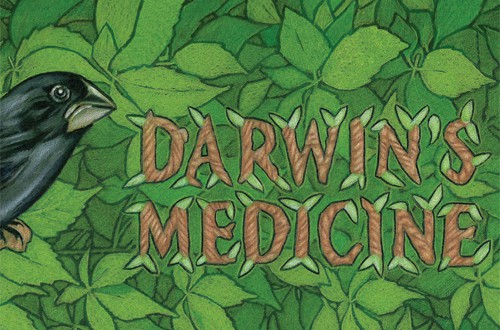
I research the evolution of our sector. So my ears prick up when I hear someone talking about the evolution of pharma or a senior executive saying that something (innovation usually) is “in our DNA”. I dive into the presentation hoping to find something but most of the time I’m disappointed.
Evolution is almost always used as a synonym for change and DNA as a metaphor for habits. This isn’t just a semantic frustration for me; by relegating evolution to a mere metaphor, the authors are missing the value in the best idea anyone has ever had. As usual with this column, I ask you to bear with me while I explain the science before I return to the practical implications.
Evolution, you will recall from Biology 101, is a process that occurs in any population of self-replicating entities (eg a gene pool). It has three steps: variation, selection and amplification. These three steps act on the population to change the statistical distribution of the entities. When a gene pool evolves, we see the emergence of new populations that share the same genes, which we call a species. That three stage mechanism is how evolution differs from mere change over time. But when industry pundits talk about pharma evolving they are not really talking about evolution in the sense that an evolutionary scientist does. And this is important because it means they are not using the enormous explanatory and predictive power of Darwin’s brilliant and beautiful idea.
Evolution is almost always used as a synonym for change and DNA as a metaphor for habits
So what does evolution mean when we apply it not to biology but to the pharma industry? Well, with apologies for the gross simplification, the self-replicating entities analogous to genes are Organisation Routines: limited but stable sets of activities that allow something to be done. They can range from a routine for complying with a regulatory requirement to one for identifying market segmentation. You have lots of genes and your company has lots of Organisational Routines. And just as your genes act by expressing themselves via proteins or switching on adjacent genes, Organisational Routines act by expressing themselves via capabilities, some of which are direct and others which enable other capabilities.
The analogy continues. Single genes can do little; they act in concert with many others and they result in the biological structures and processes. Organisational routines combine to create your firm’s structures and processes. Defective or absent genes or Organisational Routines result in some deficiency in the organism’s or firm’s functioning and this is a dynamic situation; the ideal genome or set of Organisational Routines varies as the environment changes. A species is a group of organisms with the same genes. A group of firms with the same Organisational Routines is a business model.
So, back to the practicalities and two recent news stories: Apple’s changing how its HealthKit will protect personal data and Roche’s acquisition of Intermune. Both are examples of firms deliberately engineering their own DNA.

Roche acquired US biotech Intermune for $8.3bn in August 2014
Apple realised that it lacked the Organisational Routines that would give it an essential capability in eHealth: the protection of personal data. Roche, although partly out to acquire the portfolio-complementing Esbriet, was also acquiring some Organisational Routines that will enhance its discovery capabilities in oncology. Both companies understand that evolution and DNA are not simply metaphors and that they can, and indeed must, engineer their own genome.
There are three practical lessons from this. The first is to understand the essential needs of the environment (eg patient data privacy or oncology discovery capabilities). The second is to identify the organisational routines needed to create those capabilities. The third is to work out how to acquire those routines, either by adapting existing routines (which Apple seems to have done) or by acquiring them from outside, as Roche did. Geneticists will recognise the parallels with exaptation and genic capture.
Simple as these lessons are, companies who see evolution as only a metaphor aren’t acting on them. They react to yesterday’s environment, create processes without the underlying routines and simply mimic the observable, superficial behaviour of whoever has the best current run of results. What we all need to understand is that evolution isn’t a metaphor for what’s happening to the pharma industry; evolution, via variation, selection and amplification, is what we can see happening all around us.




